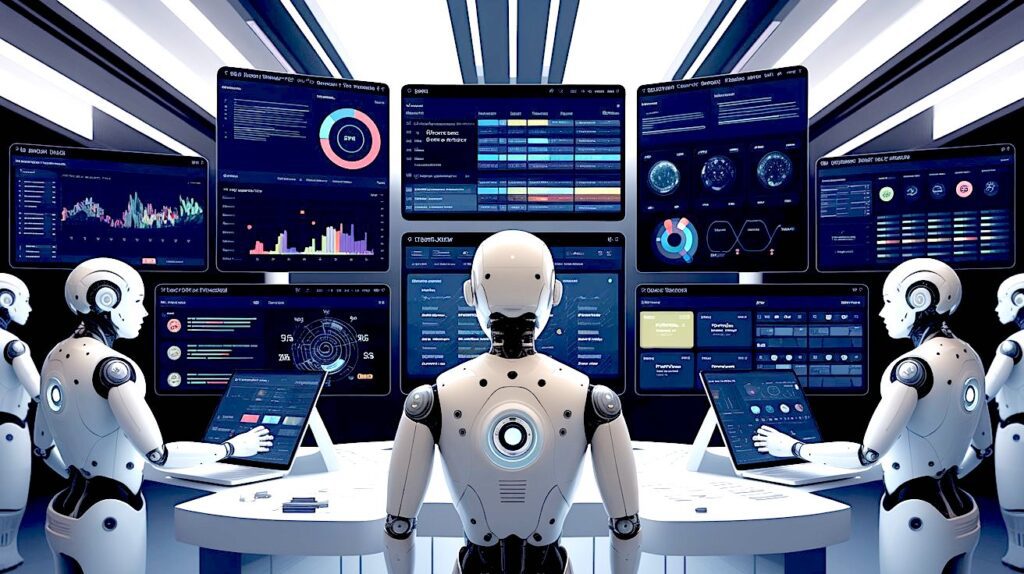The Dawn of Intelligent Agent-Based Systems in Enterprise Applications
Enterprise applications are on the brink of a significant transformation. By next year, we anticipate the emergence of intelligent, agentic systems that will redefine how organizations approach their backend systems, data platforms, and user interfaces. This change promises to be more transformative than the innovations seen during the graphical user interface, web, cloud, and mobile revolutions.
While discussions around agents are gaining traction, few have truly explored the vast potential of deploying and orchestrating numerous agents to automate enterprises comprehensively. This capability is expected to stem from application vendors and data platform providers, particularly among leading cloud players and innovative startups.
The expected impact on white-collar productivity could mirror the paradigm shift that mass production had on labor efficiency. We envision intelligent agent-based systems completing many common business processes with just a fraction of the workforce currently required.
In this article, we delve deeper into how agent-based automation will revolutionize application development, data access, and overall business operations.
Current Landscape: Islands of Automation
Today’s applications are often disjointed systems, housing proprietary data, business logic, and metadata that are not interconnected. Many commercial applications address specific business challenges, which results in separate data platforms that serve as an outdated version of truth. Unfortunately, this creates a disconnect, hindering the operationalization of insights derived from data and failing to deliver the promised real-time, comprehensive view of business operations.
Achieving true end-to-end automation with legacy applications is challenging, as most systems are loosely connected, complicating real-time business visibility. Efforts to bridge these ‘islands of automation’—through enterprise application integration, middleware, and microservices—have proven difficult due to their low-level implementation and the inherent complexity of connecting disparate languages among applications.
In essence, we have created ‘software-defined departments’ that produce data exhaust, providing a mere snapshot of business states without facilitating timely, trustworthy actions.
The Promise of Agentic AI: Unifying Silos
We see a notable opportunity where systems of agents can tackle the issue of automation silos. Envision agents with the authority and access to resources working collaboratively under human supervision towards shared goals, visible through current key performance indicators (KPIs). By responding to market changes, these agents will optimize for overarching objectives such as customer satisfaction, profitability, and growth.
Ultimately, we expect an entirely new application stack to evolve, built on existing systems over the next five to ten years. The organizations that leverage this transformation stand to greatly enhance their productivity through the deployment of multiple agents, creating disruptive AI-native processes.
Rethinking the Enterprise Software Stack
The emerging intelligent application stack will consist of five critical components:
-
Connection to Existing Backend Systems: This foundational layer connects legacy operational and analytical applications, enabling agents to interact with current systems of record.
-
Data Platform Architecture: Above this, the data platform will evolve to become more abstracted, facilitating easier access to insightful data.
-
Semantic Layer: We must build a semantic layer to harmonize disparate data elements into consistent, trusted, and governable definitions.
-
Agent Deployment Framework: Capability to deploy, manage, orchestrate, and optimize agents, empowering them to make real-time business decisions.
- Organizational Metrics: A unified system of metrics guiding the agents to align with overall business objectives.
Bridging the Gap: A Bidirectional Enterprise Model
This new architecture promotes a dual approach, integrating top-down and bottom-up methods to enhance productivity across all software development lifecycle aspects. While we’ve witnessed past attempts at creating integrated enterprise models, the introduction of agentic AI promises a more effective bridging of these automation islands.
The envisioned agents will converse in natural language, learning from business activity patterns while fostering a bottom-up approach to enhance operational capabilities. As agents collaborate and learn, they will navigate the complexities to adapt and optimize business processes more efficiently than manual coding ever could.
Connecting Legacy Applications: The Starting Point
Leading platforms like Salesforce, Microsoft, UiPath, and Celonis are crucial to establishing these two-way connectors between existing operational applications and agents. For instance, an agent assisting a customer service representative with product returns would need to interface with numerous backend systems, learning over time to streamline the process effectively.
Evolving Data Platforms
Data platforms evolve continuously, transitioning from traditional database management systems to more advanced models like modern data platforms, exemplified by providers such as Snowflake and Databricks. This shift emphasizes the importance of governance and metadata, ensuring that data remains the reliable source of truth for business insights.
Harmonizing Data for Meaningful Outcomes
The creation of a harmonized data layer becomes essential in rationalizing the complexities surrounding data management. Tools are emerging that aim to standardize the language of business across various data types, enabling clearer communication around critical business processes.
Enter the Agent Layer: Large Action Models (LAMs)
We foresee the emergence of an agent operations layer that redefines application frameworks. These agents will enhance overall productivity by automating repetitive tasks and adapting to dynamic business conditions, improving their effectiveness over time.
A Paradigm Shift In Enterprise Applications
In summary, the rise of agentic AI represents a significant evolution in enterprise application architecture, integrating current technologies with innovative solutions to facilitate seamless interaction with existing systems. This transition will ensure a more collaborative and dynamic operational framework, fundamentally shifting how businesses operate and scale.
The Future is Bright for Agentic Systems
As we anticipate the rollout of agentic systems, Salesforce is expected to take the lead, with announcements expected in the coming months, followed closely by other major players like Microsoft. As these trends progress, the integration of agents working in concert promises to unlock unprecedented levels of efficiency and productivity.
The AI Buzz Hub team is excited to see where these breakthroughs take us. Want to stay in the loop on all things AI? Subscribe to our newsletter or share this article with your fellow enthusiasts.




